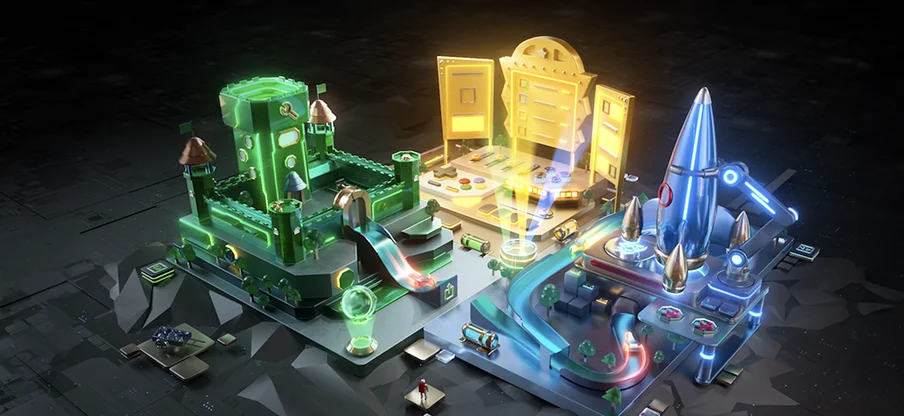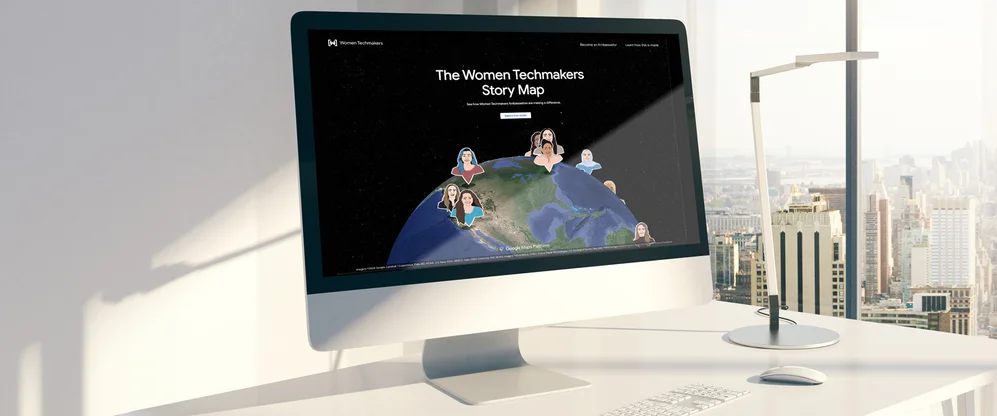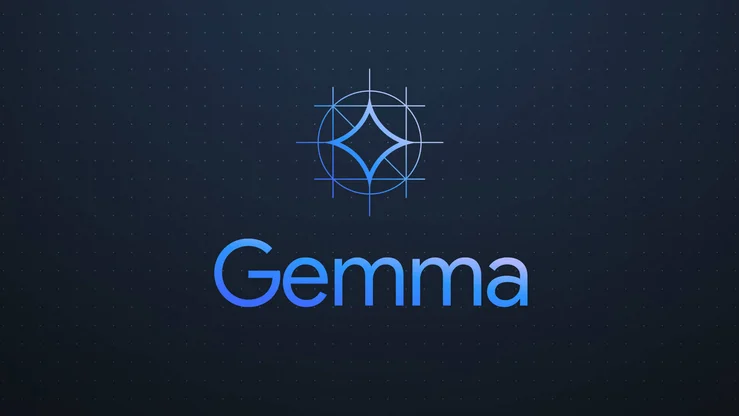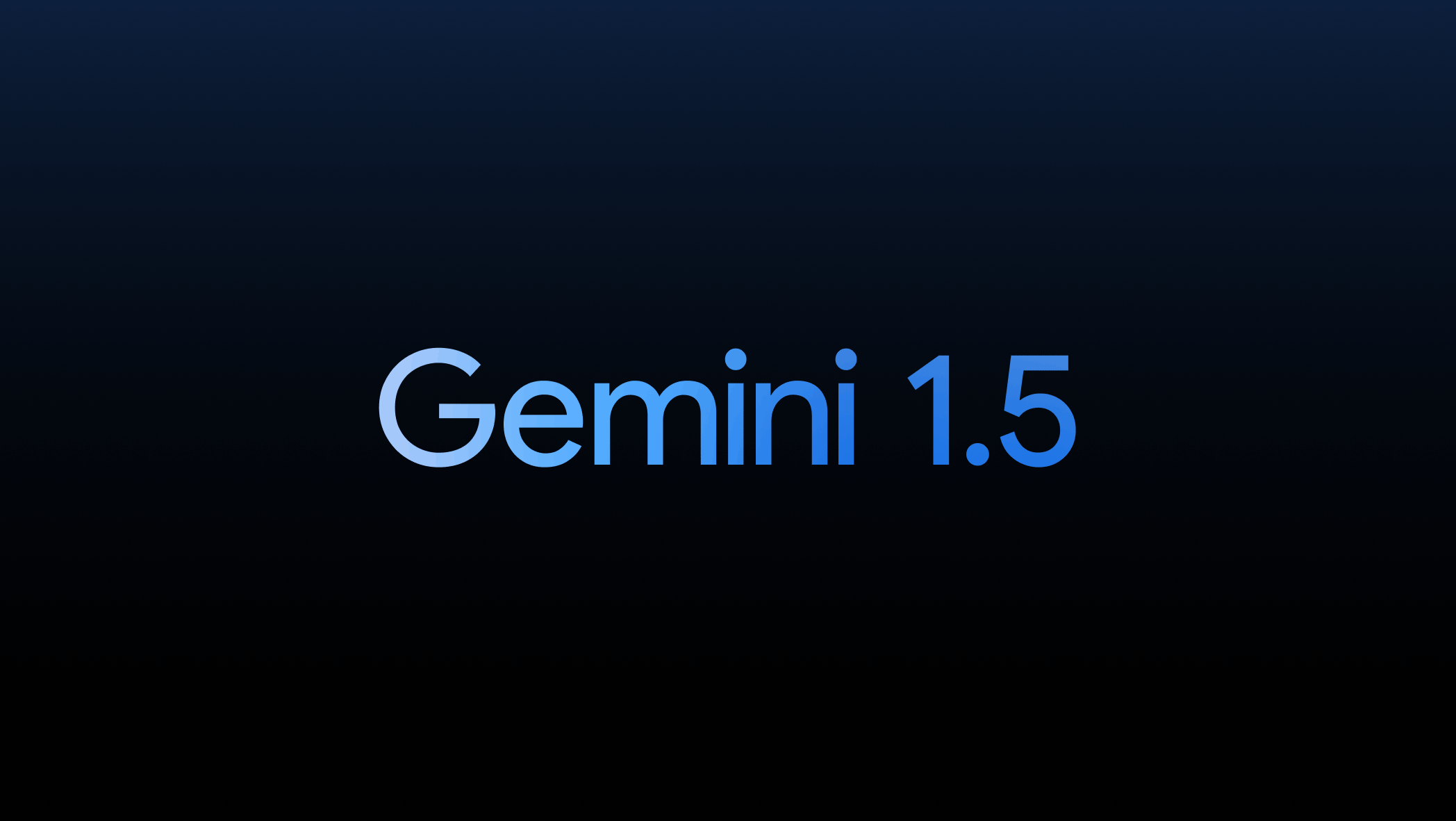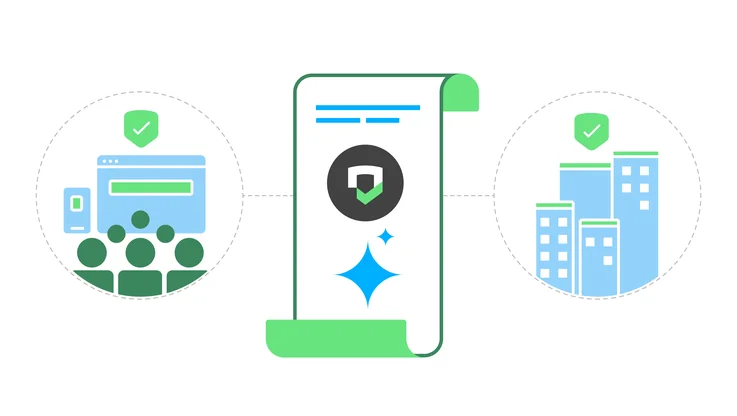Count ‘em up: 100 things we announced at I/O ‘19
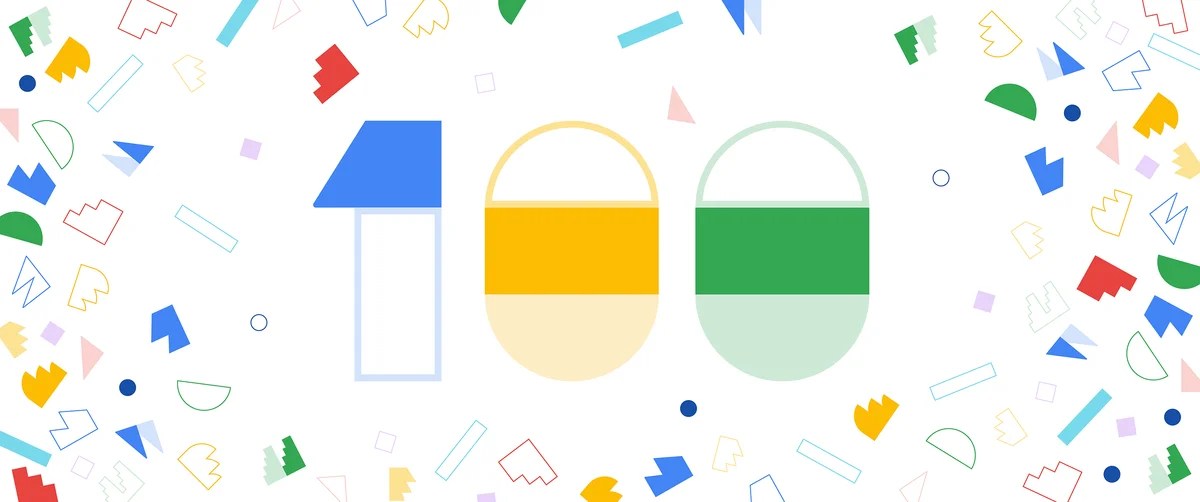
Another I/O is in the books! We played in sandboxes, watched eye-popping product demos and listened to AI-powered music. But the fun isn’t over! In case you missed it, here are 100 announcements we made at I/O:
Hardware
1. Hold the phone! Our new smartphones—the Pixel 3a and Pixel 3a XL—hit the shelves this week, bringing together all the essential Google features at a lower price ($399 for the 5.6-inch display and $479 for the 6-inch model).2. Good things come in threes, like Pixel 3a’s color options. Choose from Purple-ish, Clearly White and Just Black.
3. And no matter what color your phone is, it has the same great Pixel camera. Capture shots in portrait mode and HDR+, or use Night Sight to take magical photos in low light (think outdoor concerts, swanky restaurants or night hikes with friends).
4. To add to the creativity, Time Lapse is coming to Pixel 3a. Soon you can capture an entire sunset within a few seconds of video.
5. All-day battery, baby! The Pixel 3a charges seven hours of battery life in 15 minutes and full battery can last up to 30 hours.
6. Squeeze the Pixel 3a to get the Google Assistant to send texts, find directions, set reminders and a lot more—simply by using your voice.
7. Hi, who’s there? The Google Assistant’s Call Screen feature (available in English in the U.S. and Canada) gives more information about who’s calling before you even answer your phone. Best of all, it helps save you from robocalls once and for all.
8. The Pixel 3a is protected against new threats with three years of security and operating system updates.
9. It also comes with the custom-built Titan M chip to help protect your most sensitive data.
10. All Pixel phones will get a preview of AR in Google Maps. So the next time you're getting around town, you can see walking directions overlaid on the world itself, rather than looking at a blue dot on a map.
11. Say hello to Google Nest. We’re bringing the Home products and Nest brand together to create a helpful home.
12. We welcomed the newest member of the Google Nest family: Google Nest Hub Max. Hub Max has a 10-inch screen, premium stereo sound, a camera with built-in Nest Cam features and the power of Google Assistant.
13. Live Albums on Nest Hub Max lets you select pictures of family and friends from your Google Photos to be displayed on the screen.
14. The built-in Nest Cam helps you keep an eye on things at home. You can turn the camera on when you’re away and check on things right from the Nest App on your phone.
15. The camera on Hub Max also lets you make video calls and leave personalized messages with Google’s video calling app, Duo.
16. If you’re listening to music or watching a cooking tutorial, turn down the volume with a wave of your hand. With Gestures, you simply have to look at the Nest Hub Max and raise your hand to pause media.
17. The home view dashboard lets you control all your connected devices from one dashboard—and the Google Assistant now controls more than 30,000 smart devices from 3,500 brands.
18. Similar to Voice Match, you have the option to enable Nest Hub Max’s Face Match feature that recognizes who’s using the device and shares the most relevant information, like their calendar and estimated commute time.
19. We shared our new privacy commitments, explaining our security and privacy options for Google Nest products.
20. There’s a green light on the front of Hub Max that indicates when the camera is streaming. In addition, you have multiple controls to disable camera features, like the Nest Cam and Face Match.
21. Hub Max will be available in the U.S., U.K. and Australia this summer.
22. Google Nest Hub, formerly Google Home Hub, is now available in 12 more countries—Canada, Denmark, France, Germany, India, Italy, Japan, the Netherlands, Norway, Singapore, Spain and Sweden.
23. And our prices are lower: Google Nest Hub available in the U.S. for $129, and starting today Google Home is $99 and Google Home Max is $299.
Assistant
24. The Assistant is now on more than one billion devices, available in more than 30 languages across 80 countries.25. The next generation Assistant will run on-device and answer queries up to 10 times faster, with almost zero latency. It will come to Pixel phones later this year.
26. Keep the conversation going. Now with Continued Conversation, you can make several requests in a row without having to say “Hey Google” each time.
27. We’re extending Duplex to the web to help you complete tasks faster. Just ask the Assistant, “Book a car for my next trip,” and it will figure out the rest.
28. Sound the alarm! You can now stop a timer or alarm that you set on Google Home speakers and Smart Displays by simply saying, “stop.”
29. Help is on the way! With a new feature called Personal References, the Assistant will better understand you and reference to the important things in your life. Say you’ve told the Assistant which contact “Mom” is. You can then ask, “Hey Google, what’s the weather like at my mom’s house this weekend?” and get the answer without any additional details.
30. Choose your next recipe to try, event to attend or podcast to listen to with Picks for You. This Assistant feature draws from past searches and other contextual cues to give you more personalized results.
31. Over the coming weeks, you’ll be able to access all of the helpfulness of the Assistant directly within Waze.
32. Take advantage of Google Assistant Driving Mode when you’re behind the wheel. The new dashboard automatically starts when you’re driving and displays the most relevant activities like navigation, messaging, calling and media.
33. It’s easier to use the Assistant to control your car remotely, so you can adjust your car’s temperature, check your fuel level or make sure your doors are locked without leaving the house.
34. Control your Assistant data and make privacy choices that are right for you from the “You” tab in your Assistant settings.
35. Ever Googled a “how-to” question? We’re giving content creators easy-to-use developer tools so in the coming months when you ask, “Hey Google, how do I install a dog door?” you’ll get a helpful step-by-step experience from a trusted source like DIY Networks.
36. The Assistant can now help you do specific things in some of your favorite apps. For example, you can say, “Hey Google, start my run in Nike Run Club.”
37. Game makers can now take full advantage of developing for Smart Displays' interactive screens, so you'll start seeing more games that combine voice, visuals and touch.
AI and ML
38. And the winner is…we unveiled the 20 Google AI Impact Challenge grantees who are using AI to address societal challenges.39. We’ve made progress on flood forecasting in India. Now we can better use AI to predict flood timing, location and severity across 90 percent of India, and share that information with Google Public Alerts.
40. Two bands took the stage at I/O—with a little help from machine learning. Both YACHT and The Flaming Lips worked with Google engineers to create music with Magenta, our AI tool for artistic creativity
41. Check out our new PAIR Guidebook, an external toolkit that will help ML practitioners make better, user-centered decisions when building with AI.
42. We’re taking the same AI research that makes our products better and using it to enhance user privacy. Federated learning allows Google’s AI products to work better for you, and work better for everyone, without collecting raw data from your devices.
Google News and Search
43. Now it’s easier to stay in the know. The technology that powers Full Coverage in Google News is coming to Search to better organize search results for news-related topics and give you the context you need to understand a story.
44. When you search for a news topic, you’ll have the option to see different points of a story—from a timeline of events to the key people involved—and surface a breadth of content including articles, tweets and even podcasts.
45. In the coming months, we’ll start including podcasts in Google Search results so you can listen to podcasts directly from the search results page or save an episode for later.
Augmented Reality and Google Lens
46. Seeing is believing! Soon you’ll be able to view 3D objects right from Search and place them into your own space.
47. Lens now provides more visual answers by using AR to overlay useful information and content onto the things you see. For example, if you see a dish you’d like to cook in an upcoming issue of Bon Appetit magazine, you’ll be able to point your camera at a recipe and have the page come to life and show you exactly how to make it.
48. Lens can help you decide what to order. Just point your camera at the menu, and Lens highlights which dishes are popular, right on the menu. Tap on a dish to see photos and snippets of reviews from Google Maps.
49. Now, you can point your camera at text and Lens will automatically overlay the translation right on top of the original words—it works in more than 100 languages.
50. Say what? When you point your camera at text, Lens can now read it out loud. You can also tap on a specific word to search for its definition. This feature is launching first in Google Go, our Search app for first-time smartphone users.
Privacy
51. You’ll start seeing your Google Account profile icon appear more prominently across all Google products, so it just takes one tap to access your privacy and security settings.
52. Now we’re making it easier to manage your data in Maps, the Assistant and YouTube (coming soon). For example, you'll be able to review and delete your location activity data directly in Google Maps, and then quickly get back to your directions.
53. New auto-delete controls for Location History and Web & App Activity allow you to choose to automatically and continuously delete your data.
54. We’re expanding Incognito mode—the option in Chrome that clears your browsing history after every session—to more of our products, including Maps.
55. Thanks to federated learning, Gboard has improved predictive typing as well as emoji predictions across tens of millions of devices.
56. We’ve built security keys directly into your Android phone, giving you easier and more convenient protection against phishing attacks. This is rolling out to all devices running Android 7.0 and above.
Android
57. Android Q’s newest features are centered around innovation, security, privacy and digital wellbeing.
58. A new gesture-based navigation lets you easily move between tasks and utilize a bigger screen.
59. Android Q has tools for developers to build cool apps for foldable phones and 5G, opening up new possibilities for experiences like gaming on your device.
60. Live Caption will automatically caption media playing on your phone—like videos podcasts, audio messages, even stuff you record yourself—across any app.
61. Smart Reply is getting even smarter! Not only will your phone show suggested replies, it’ll also help you take action, like opening addresses from a text message in an app like Maps.
62. You asked, we listened! Android Q brings Dark Theme. You can activate in Settings, or by turning on Battery Saver.
63. We’re bringing privacy to the top level of Settings so you can find all the important controls in one place.
64. Android Q arms you with new permission controls so you can share your location (or not) with apps on your own terms.
65. Time for a time out? With the new Focus Mode, you can get things done without distraction, by selecting the apps you want to stay active and pausing everything you don't.
66. And to help children and families find a better balance with technology, we’re making Family Link part of every device that has Digital Wellbeing, starting with Android Q.
67. Signed, sealed, delivered! There’s a new way to deliver important updates. With Project Mainline, we can update core OS components without a full OS update.
68. All Android devices with Q—including phones, tablets, TVs, and Android Auto—are required to encrypt user data.
69. Some of these features are available today in Android Q Beta which is available on 15 devices from 12 manufacturers (in addition to all Pixel phones).
70. Android Q brings lots of new emoji, including 53 new non-binary designs for emoji that Unicode defines as "genderless.”
71. Buckle up! Android Auto’s new design coming out this summer will help you get on the road faster, show you useful information at a glance and simplify common tasks while driving.
72. Now media developers will be able to build new entertainment experiences for Android-powered infotainment systems.
73. With Tiles on Wear OS by Google you have more swipeable access to things right from your wrist like your goals, next event, weather forecast, heart rate and timer.
74. Android TV platform now has more than 140 pay TV partners, 6 of the 10 top smart TV OEMs using the Android TV platform; and more than 5,000 apps and games in its ecosystem.
Chrome
75. It’s now easier to share files between Linux, Android, and Chrome OS using file manager.
76. Android Studio on Chrome OS helps you optimize your apps for Chrome OS—directly on your Chromebook.
77. All Chromebooks launched this year will be Linux-ready right out of the box.
78. We have more user transparency and controls, like improved cookie controls and more restrictions for fingerprinting across the web.
Ads
79. With the option to bid on tROAS, advertisers will soon be able to automatically pay more for users who are likely to spend more in apps, and pay less for users likely to spend less.
80. We’re teaming up with eight agencies
https://blog.google/products/ads/google-io-ads-announcements/
—Vidmob, Consumer Acquisition, Bamboo, Apptamin, Webpals, Creadits, Kaizen Ad and Kuaizi—to provide advertisers end-to-end creative development and consultation services.
81. We’ll be expanding a new monetization program, called Open Bidding, to all publishers later this year so developers can automatically maximize the value of every impression automatically.
82. New transparency tools across browsers
https://blog.google/products/ads/transparency-choice-and-control-digital-advertising/
will give people greater visibility into the data that Google uses to personalize ads.
83. We also launched new AdMob tools for developers that help give more control over ad content, easily access metrics and quickly identify and remove bad ads.
Accessibility
84. Project Euphonia is using AI to improve computer's' abilities to understand and transcribe a diverse set of speech patterns, including impaired speech.
85. Live Relay uses on-device speech recognition and text-to-speech conversion to allow the phone to listen and speak on people’s behalf while they type.
86. Project Diva is a research effort that makes Google Assistant more accessible for people with disabilities.
More developer announcements
87. We’re launching a preview for Local Home SDK that lets smart home developers bring a new level of speed and reliability to smart home devices.
88. The next version of our Maps Android SDK is now available for public beta. It’s built on a common platform with the Google Maps mobile app, which means better performance and feature support.
89. A new Google Maps Platform integration with deck.gl will make high-quality data visualizations at scale possible.
90. We’re unifying our efforts around third-party connected home devices under a single platform for developers. Now we’ll be delivering a single consumer and developer experience through the Works with Google Assistant program.
91. We introduced updates in ARCore to Augmented Images and Light Estimation— features that let you build more interactive, and realistic experiences.
92. Scene Viewer is a new tool that lets users view 3D objects in AR right from your website.
93. Android development will become increasingly Kotlin-first.
94. We released 11 new Jetpack libraries and open-sourced an early preview of Jetpack Compose, a new unbundled toolkit designed to simplify UI development.
95. Android Studio 3.5 Beta is available for download and includes improvements in three core areas: system health, feature polish and bugs.
96. Flutter 1.5 includes hundreds of changes in response to developer feedback, including updates for new App Store iOS SDK requirements, updates to the iOS and Material widgets, engine support for new device types, and Dart 2.3 featuring new UI-as-code language features.
97. We released the first technical preview of Flutter for the web.
98. Our in-app updates API is out of beta. Now people can install updates without ever leaving the app.
99. New metrics and insights in the Google Play Console help developers better measure app health and analyze performance.
100. A new change is coming to Chrome Canary to help image-heavy websites can load more quickly.


